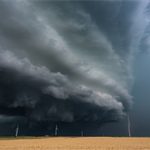USDA expands crop insurance for camelina
Energy Disrupter
ADVERTISEMENT
The USDA’s Risk Management Agency on June 30 announced it will expand crop insurance for camelina in direct response to the anticipated increase in demand for the crop for biofuel production. The expansion provides additional grower certainty as demand for the biofuel feedstock increases.
RMA is expanding crop insurance for camelina by allowing written agreements in select counties in Colorado, Idaho, Kansas, Montana, Nebraska, North Dakota, Oklahoma, Texas and Washington. In addition, the fall planted practice was expanded to Harper County, Kansas, which paved the way for the expansion in the Great Plains. RMA collaborated with stakeholders to make the expansion possible.
“Camelina is a valuable input in the production of renewable fuels. In response, processors are trying to increase planted acreage of camelina to meet the growing demand for renewable fuel sources,” explained Ben Thiel, Director of the RMA Spokane Regional Office. “We want to make sure that we continually adapt to the challenges our producers face day-to-day so we can provide them with the best risk management tools. Expanding insurance for camelina is a great example.”
According to USDA, the camelina crop insurance policy offers Actual Production History coverage, which insures a producer’s historical yield. Only camelina grown under contract with a processor is eligible for coverage, and the price in the contract is used to establish the insurance coverage. Producers that are interested in planting and insuring camelina should speak to their crop insurance agent about additional details, including upcoming sales closing dates for their area and the written agreement process.
Global Clean Energy Holdings Inc. and its subsidiary Sustainable Oils, Inc., collaborated extensively with the USDA to make the expansion possible.
“We like to say that camelina protects like a cover crop and pays like a cash crop – benefits that are increasingly important to strengthening our soil health and rural agricultural communities,” said Mike Karst, president of Sustainable Oils. “Thanks to this insurance expansion by the USDA’s RMA, farmers can grow camelina with confidence knowing there is a safety net to protect their crop. Risk management is critical for the continued adoption of camelina throughout the country, providing ultra-low carbon intensity renewable fuels and enhancing soil health on farmland. We thank the USDA for recognizing the value of this important crop and adapting policies to support its continued growth.”
Camelina is an annual crop in the mustard family that can be successfully grown in drought prone environments. According to Sustainable Oils, the nonfood crop can be used as an ultra-low carbon feedstock for renewable fuel production and as an ingredient in high-protein animal feed. Camelina’s short production cycle allows it to be incorporated into existing crop rotations providing the benefits of a cover crop during idle/allow land periods, and additional revenue for growers, the company added.
















